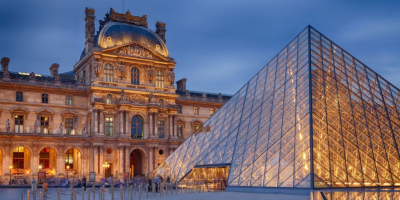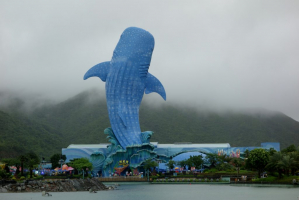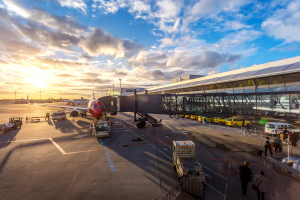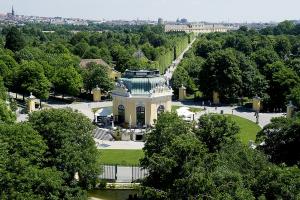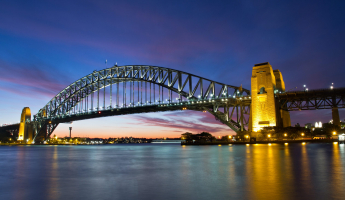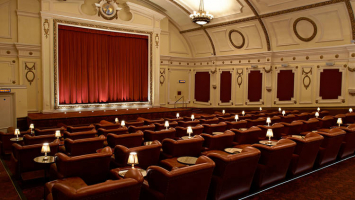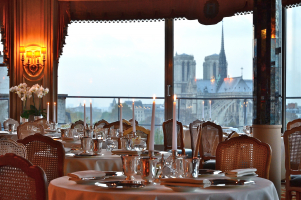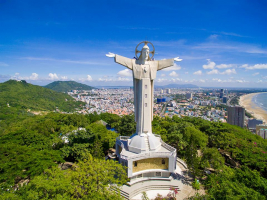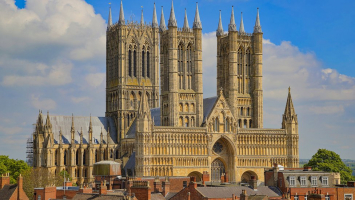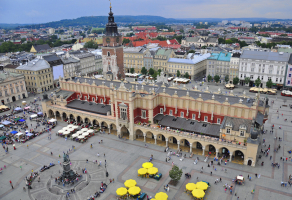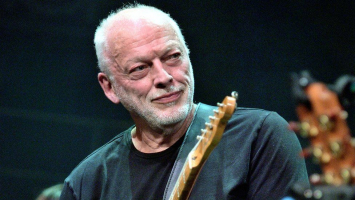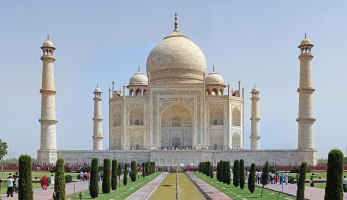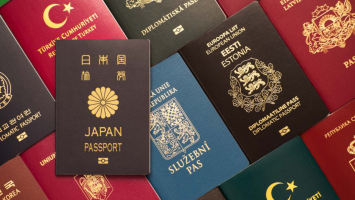Top 10 Best Chinatowns In The World
Visit every major city in the world and travelers will find a Chinatown. And just as eclectic as the range of nations in which china’s migrant popes. Each ... read more...Chinatown is diver but visitors are always guaranteed to find a combination of bustling commerce, culture, and authentic cuisine on any visit. Each of these Chinatowns – testaments to the questing, cosmopolitan spirit of their founding cultures – is a worthy destination in its own right. Discover the list of best Chinatowns in the world to gain a more exciting understanding of Chinese people in different countries.
-
San Francisco has the largest Chinese community of any city outside Asia, so it makes sense that its Chinatown is so big and beautiful. Right in the center of the town, the neighborhood spans more than two kilometers. As visitors explore the food and culture of its busy streets, don't miss trying pan-fried dumplings or a selection of dim sum – some dumpling houses are so good that they often have lines around the corner. There are exotic emporia, temples, tea houses, restaurants, Chinese banks, schools, law offices, bookstores, laundries, and factories recalling the sweatshops of earlier times. In order to enter through the front door, approach Chinatown from the Union Square area or the Financial District.
Marked by the beautiful Dragon Gate with its green roofs, San Francisco's Chinatown— between Stockton Street and Grant Avenue—is the largest Chinatown outside of Asia and the oldest in North America. While visiting San Francisco, make sure to come by and support its Chinatown businesses–the Golden Gate Fortune Cookie Factory is an institution. Cramped and colorful, San Francisco's Chinatown covers 24 square blocks and houses the second-biggest Chinese community outside Asia. Also, as the oldest Chinatown in North America, it has been influencing the local culture since its establishment in 1848. This deserves to be one of the best Chinatowns in the world.
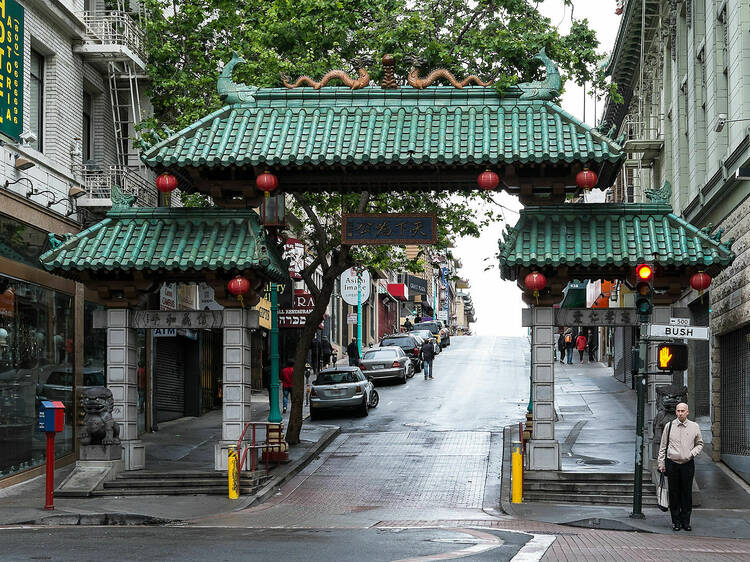
Source: sanfranciscochinatown 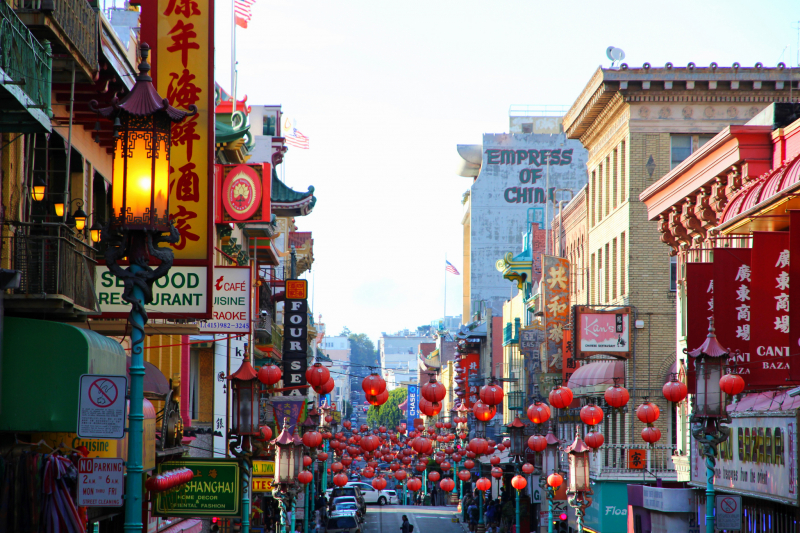
Source: timeout.com -
New York City is blessed with two bustling Chinatown neighborhoods in Manhattan and Flushing, Queens. If visiting the city, chances are travelers will visit Manhattan’s Chinatown, which offers a slew of delicious eateries and charming shops to support. If visitors are headed to Manhattan, don’t skip on Nom Wah Tea Parlour, the city’s first dim sum restaurant dating back to the 1920s. All the way at the end of the number 7 subway line, this Queens neighborhood is home to the largest Chinese population in the city – and the flavourful food is worth the trip alone. Be sure to hit up plenty of dumpling stands, tea houses, and bakeries, where travelers will find the best egg custard tarts in the city.
One of the largest Chinese-American settlements in America, and also one of the best Chinatowns in the world, New York's Chinatown got its start in the 1870s when Chinese railroad workers drifted east from California in the wake of anti-Asian sentiment. Once squeezed into a three-block area, today's Chinatown encompasses around 40 blocks, swinging around Little Italy to Houston Street. Although Chinatown is now a little faded in some areas, half of its appeal is in negotiating the vendors, tourists, and residents that fill its busy streets.
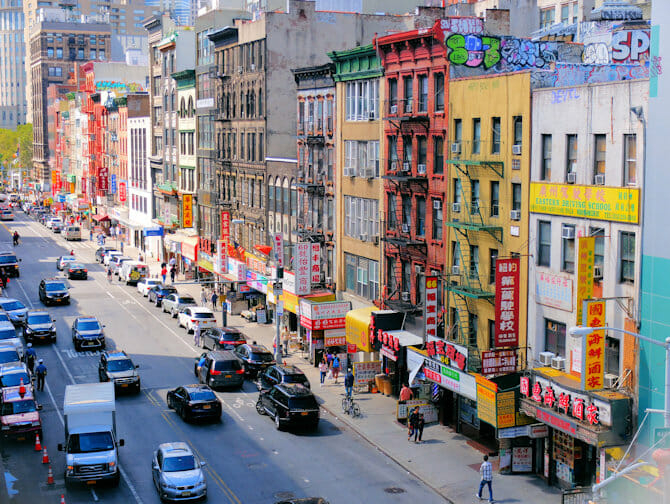
Source: newyork.co.uk 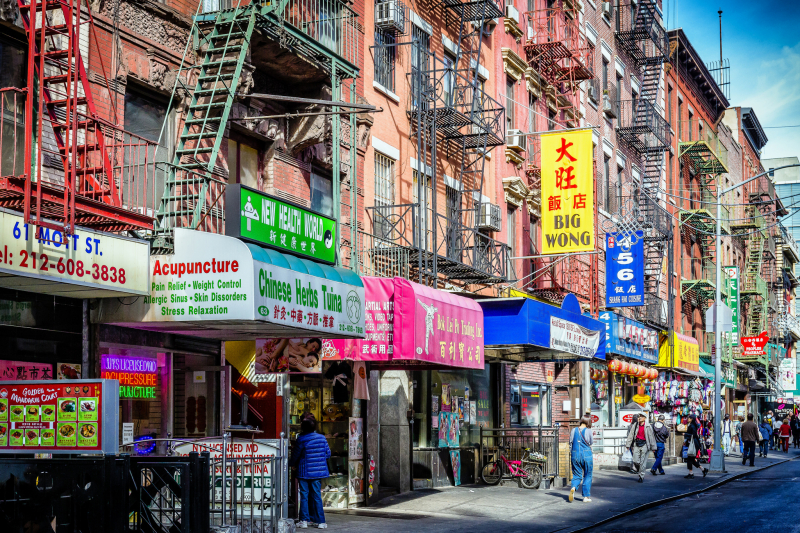
Source: nycgo.com -
In the heart of London, bordering Soho and the Westend theatres, Chinatown is a colorful experience with red flags, lanterns, and dragons everywhere. At night, the many restaurants, bubble tea cafes, speakeasies, and karaoke bars attract Londoners and visitors alike. But aside from its happening nightlife, there is also plenty of art to discover in London's Chinatown neighborhood. Chinese immigrants, mainly Cantonese from Hong Kong, started to settle in the area during the 1950s. Street names are subtitled in Chinese, and the tops of telephone boxes resemble mini pagodas. This deserves to be one of the best Chinatowns in the world, and visitors will discover over 80 restaurants, a number of Chinese bakeries, supermarkets carrying imported goods, and a slew of souvenir shops.
Gerrard Street, which lies between Leicester Square and Old Compton Street, is the main thoroughfare of London's Chinatown. Eating out is the main attraction here, but there are also herbal and medicine shops to explore. On Sundays, a family outing day for the city's Chinese, there is a Chinese food market. Chinese New Year is celebrated in style, with massive papier-mache lions dancing through the streets. Although the original Chinatown was discredited amongst the general public through embellishments, which exaggerated the district's copious opium dens and slums, as the population became increasingly assimilated into British culture and moved into Soho, London's Chinatown became immensely popular with residents from all backgrounds, particularly following the Second World War when Chinese food became popular.
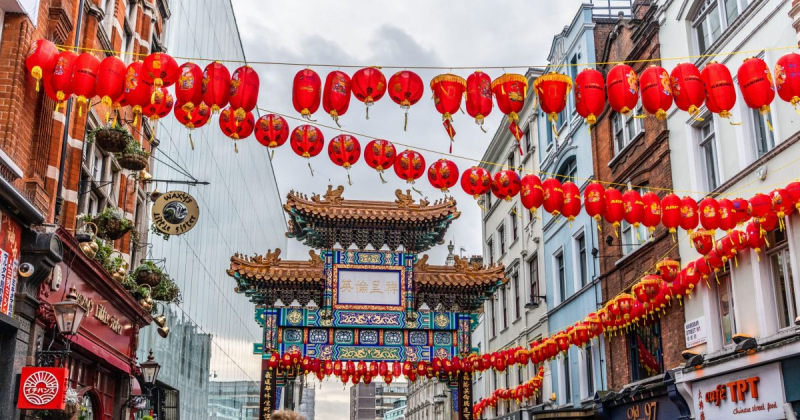
Source: londonxlondon.com 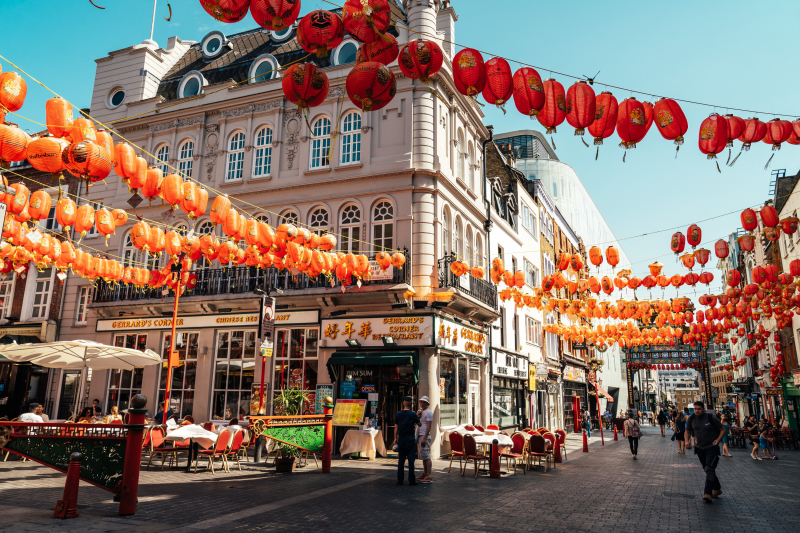
Source: chinatown.co.uk -
Melbourne’s Chinatown - stretching between Little Bourke Street to Spring Street—is reportedly the oldest continuous Chinese settlement in the Western world and the oldest Chinatown in the Southern Hemisphere. Chinese immigrants settled here during the Victorian Gold Rush in the 1850s, and every Lunar New Year holds one of the world’s biggest dragon stalks, which requires 200 people to operate it. Don't miss seeing the dragon in the Chinese Museum in Cohen Place if visitors are visiting outside of the New Year’s celebrations. The stretch between Swanston and Springs streets is frantically busy on Sundays when a swathe of restaurants serve yum cha (dim sum). Aside from food, there are also several cool bars in Chinatown that are packed cheek-by-jowl on weekends.
Melbourne owes its deep-rooted Chinatown to the riches of the earth, with the first Chinese immigrants arriving in the fledgling city after gold was discovered in 1850. Consequently, Melbourne’s Chinatown is one of the oldest in the southern hemisphere, and also one of the best Chinatowns in the world. This Chinatown has been enriched by the city's cultural diversity; with Indonesian, Korean, Malaysian, Thai, and other southeast Asian eateries now peppering the district. It’s impossible to walk past the xiao long bao without stopping in for a bite; nibble the top from one of these silken pouches of steamed pork, suck out the juice and imagine yourself in the alleys of Old Shanghai.
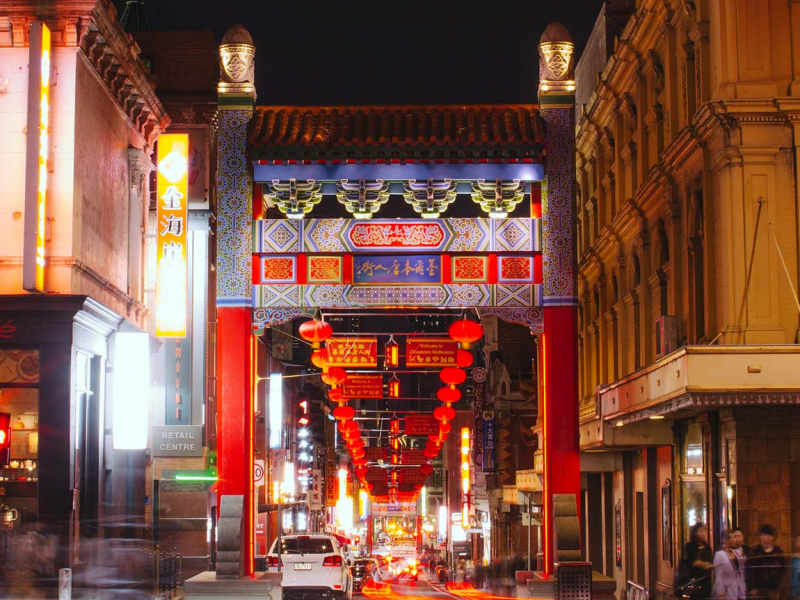
Source: visitmelbourne.com 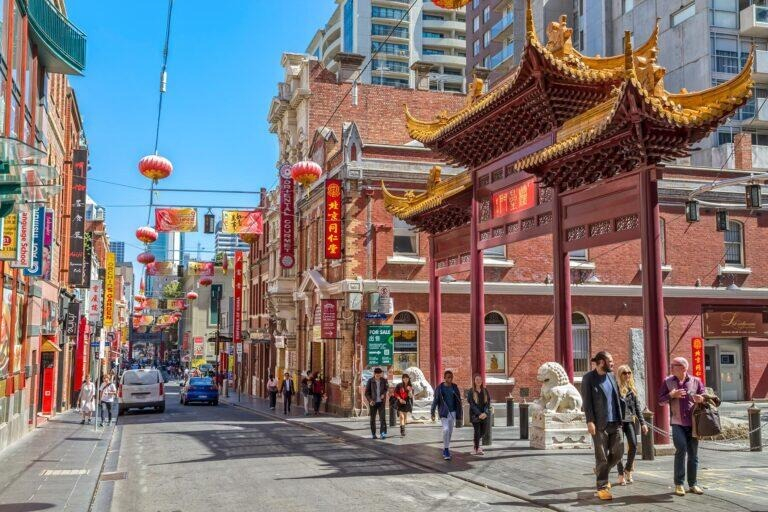
Source: whatson.melbourne.vic.gov.au -
In Toronto, it is easy to get confused when looking for the city’s Chinatown. There used to be an old, original one, but the residents were relocated to Dundas West and Spadina in the 1950s when the area was cleared for a new City Hall. According to locals, there are six different Chinatowns, with Central Chinatown being the largest. With so many restaurants and shops standing shoulder-to-shoulder, it’s best to go on a local food walking tour to get the lay of the land. Visiting the area can be a fruitful and immersive way to experience Toronto’s rich multicultural landscape, but can also present itself as a dizzying array of sights, smells, and sensations.
Toronto's central Chinatown runs west along Dundas Street and north on Spadina as far as College Street. There are several Chinatowns in the city, but this is the largest and best known since it has loads of stores and restaurants here that remain open until late at night. Here, visitors will find overflowing fruit and vegetable stands, Chinese herbalists, and grocery stores. Definitely worth seeking out is Mother’s Dumplings, a little redoubt of foodie bliss from Shenyang in China’s northeast. This one of the best Chinatowns in the world is an energetic and unique commerce district, as well as a place where people connect with their families and culture.
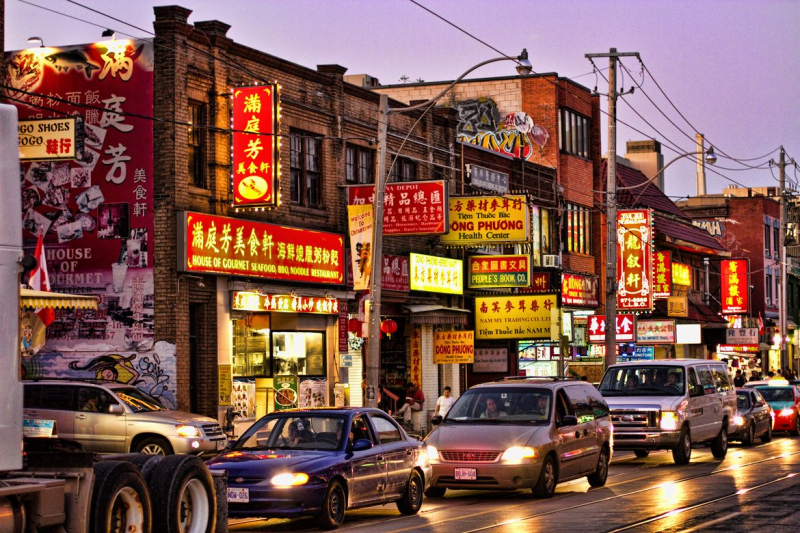
Source: thestar.com 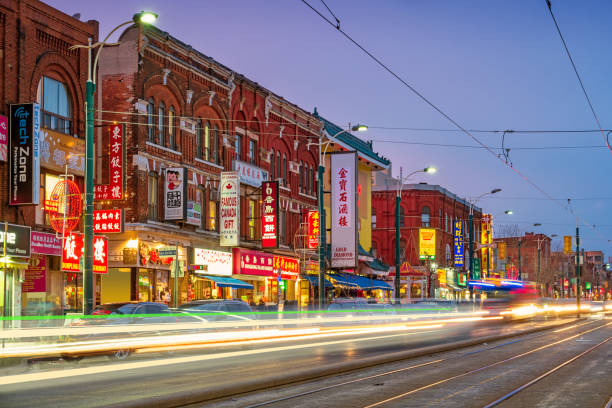
Source: localfoodtours.com -
Lima’s Barrio Chino, or China neighborhood, is home to the largest Chinese population in Latin America, and also one of the best Chinatowns in the world. In the heart of the old town, the quarter has had its share of bad luck with near-destruction in the mid-1800s during the War of the Pacific and destruction and looting during the Labor Riots in 1918. Numbers declined, but new life was breathed into the old neighborhood in the late 1990s, in time for its 150th anniversary. The lifting of the ban on Chinese immigration has restored Lima’s Barrio Chino to its bustling self.
Lima’s Barrio Chino is a pedestrian-only stretch of road that hosts various Chinese festivals, souvenir shops, and restaurants. Over 6,000 Chinese restaurants have opened their doors in Lima, most of which can be found in El Barrio Chino. Also, other places of interest include temples, oracles, and various Chinese associations. Lima’s Barrio Chino continues to be a thriving community. Several restaurants, temples, and establishments are scattered across the area while the first-ever Chinese-language newspaper in the Americas ‘Man Chin Po’ originated in Lima. Lima’s Chinatown or Barrio Chino is an interesting mix of influences and cultures. Lima’s Chinatown is a source of Chinese handicrafts, herbs, vegetables, products in general, and Asian cuisine ingredients. Nowadays, the influence of the Chinese in Peru is ethnic and gastronomic.
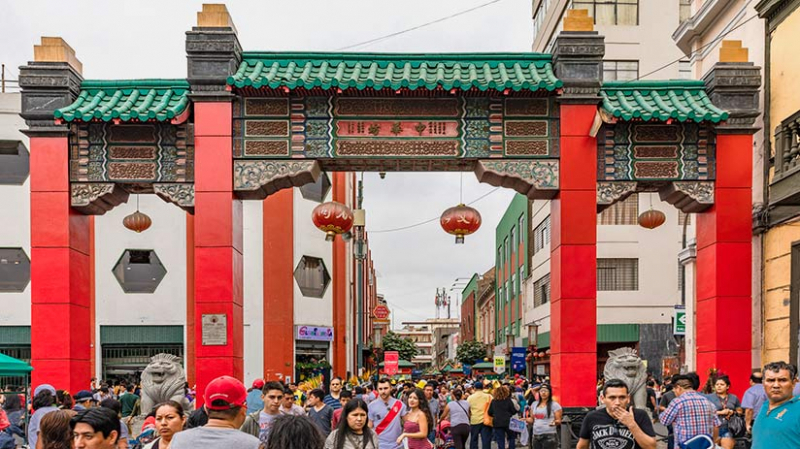
Source: machutravelperu.com 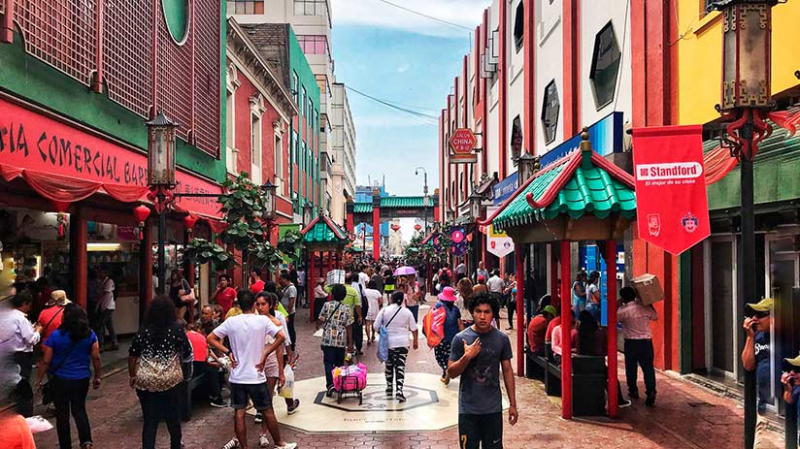
Source: machutravelperu.com -
At the end of the 1800s, Chinese workers moved to Vancouver to work in the mines and on the Trans-Canada railway. Now, this Chinatown is North America’s third-largest after New York City and San Francisco, become one of the best Chinatowns in the world. Apart from specialty stores and restaurants, Vancouver’s Chinatown also has a beautiful garden, Dr. Sun Yat-Sen Classical Chinese Garden, featuring pagodas, fish ponds, miniature trees, tea ceremonies, and free history tours. It stretches for several blocks east of Main Street and its center is a 10- to 15-minute walk from downtown. On Columbia Street is the Chinese Cultural Centre, which provides a good introduction to the role of the Chinese in western Canada's history. From esoteric Chinese herbs and spices to jade and silks, there are numerous specialist shops along East Pender and Keefer streets to fascinate even the most shopping-averse.
Chinese immigrants flocked to Vancouver following the British Columbia gold rush, but also in part due to the Canadian Pacific Railway. With roots in the 1880s following the era of gold rushes and railroads, Vancouver's Chinatown is also a lesson in endurance, given that the Chinese Exclusion Act (among other things) quelled Chinese immigration in the 20th century. Despite those setbacks, the city's Chinatown has become one of the largest in the world - visit the Dr. Sun Yat-Sen Classical Chinese Garden, take a selfie under Millenium Gate, eat up at Bao Bei Chinese Brasserie, steal some fresh aromas at Treasure Green Tea Company, and stop by the beloved-if-eclectic Jimi Hendrix Shrine are the most popular destinations.
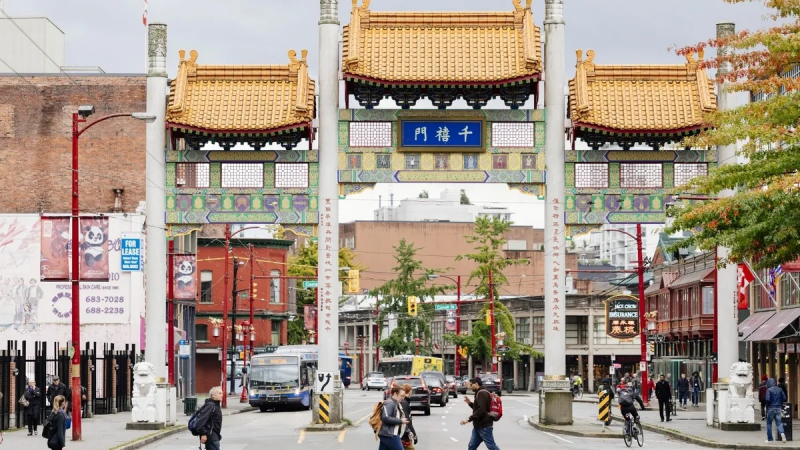
Source: vancouverplanner.com 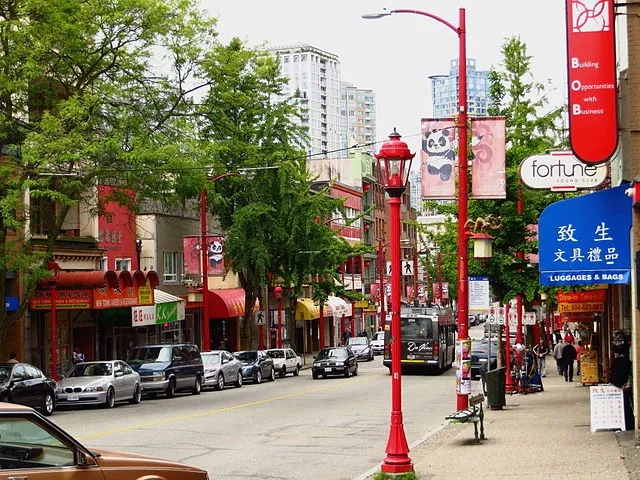
Source: cntraveler.com -
Another contender for the title of best Chinatown in the world is Bangkok’s Chinatown, which is truly sprawling. This Chinatown is also one of the most vibrant with its day and night markets, street food stalls, delicious smells, and colorful n signs. Originally formed in 1782, making it one of the oldest Chinatowns in the world, the entire neighborhood was relocated to Yaowarat Road in the Samphanthawong District where it remains today. Don’t miss Wat Traimit, the Temple of the Golden Buddha, which houses the world’s largest golden Buddha, weighing in at 5.5 tons.
One of the oldest areas of the city, Bangkok's Chinatown retains narrow lanes of cluttered markets not much changed since its creation. With pungent food stalls and ornate Chinese shrines that are loud, boisterous, and frenzied, this is Bangkok at its visceral best. The beginnings of a real Chinatown came when King Taksin encouraged Teochew laborers and merchants to relocate from southern China in 1767 when he chose Thonburi as his new capital. Chinatown's boundaries now stretch along the Chao Phraya, loosely from the River City shopping complex to the edge of Pahurat Market. Chinatown has been hugely influential in Bangkok's life since the beginning of the city. For a surefire itinerary, follow the crowds lining up for stir-fried crab and sweet-and-sour shrimp at various street stalls; hit up both the day and night markets along Yaowarat Road;...
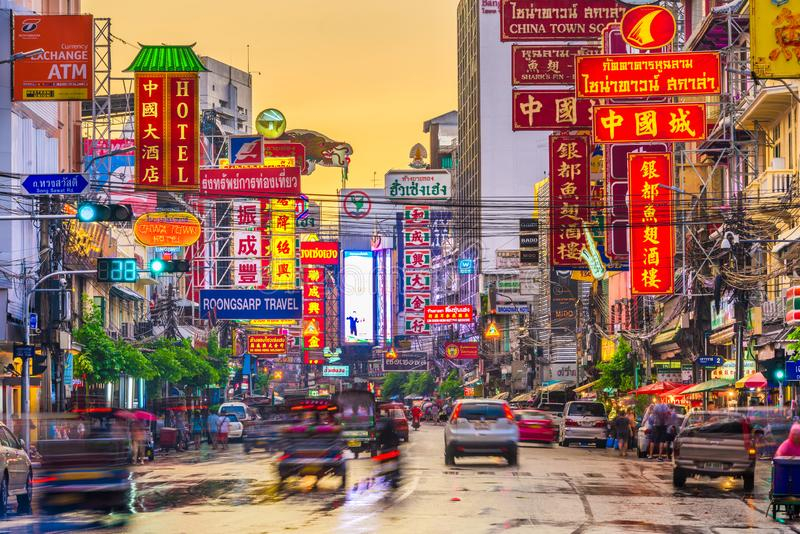
Source: bkkfoodie.com 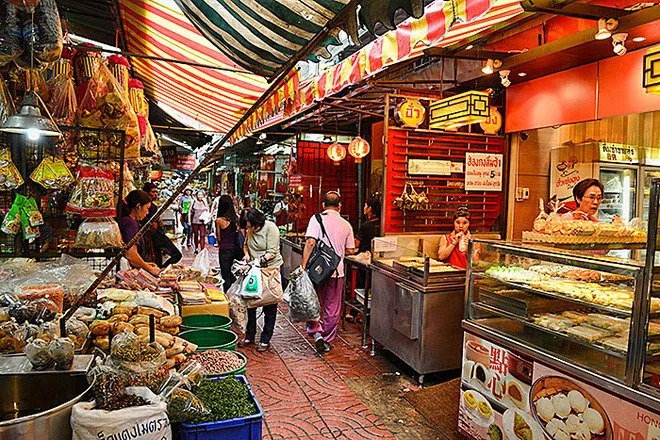
Source: tourismthailand.org -
In a city obsessed with food, Singapore’s Chinatown is a teeming, steaming standout, one of the best Chinatowns in the world. Much of Singapore’s population is of Chinese origin, but that does not take away from the fact that it has a distinct Chinatown neighborhood, which stands out with its traditional shophouses and markets on and around Smith Street. Despite its distinctive Chinese look, this neighborhood is also famous for its Hindu Sri Mariamman Temple, the Buddha Tooth Relic Temple, and the time-capsule National University of Singapore (NUS) Baba House. Conservation shophouses are where visitors will find decades-old businesses, which stand shoulder to shoulder with even older places of worship. Medical halls dispense traditional herbal cures and families flock to restaurants for dim sum at the weekends. Exotic sights and smells still dominate. There are rare Asian ingredients and frogs to be skinned in the fresh produce market. At certain times of the year, the streets are filled with the pungent aroma of durians.
Although Singapore’s main ethnic population is Chinese, Singapore’s Chinatown has a rich cultural history and is among the most prolific in the world. Indeed, significant portions have been deemed national heritage sites, a sign of their importance to Singaporean identity. Delve deeply into its fascinating history at the Chinatown Heritage Centre before heading to foodie haven Chinatown Complex, where you’ll find Hong Kong Soya Sauce Chicken Rice & Noodle, a hawker stall so good it’s earned a Michelin star. Proprietor Mr. Chan Hon Meng serves up bronzed soy-sauce chicken and crispy sweet char siew pork to lines of barbecue lovers that start forming well before the shutter rolls up.
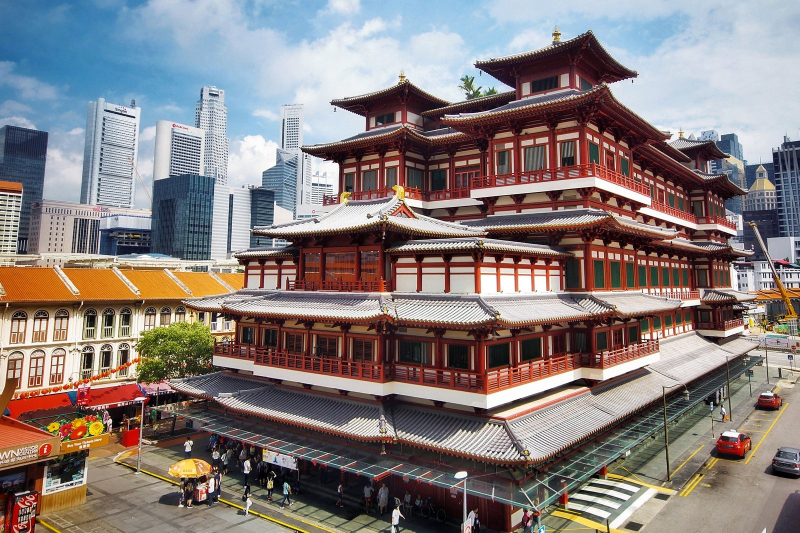
Source: visitsingapore.com 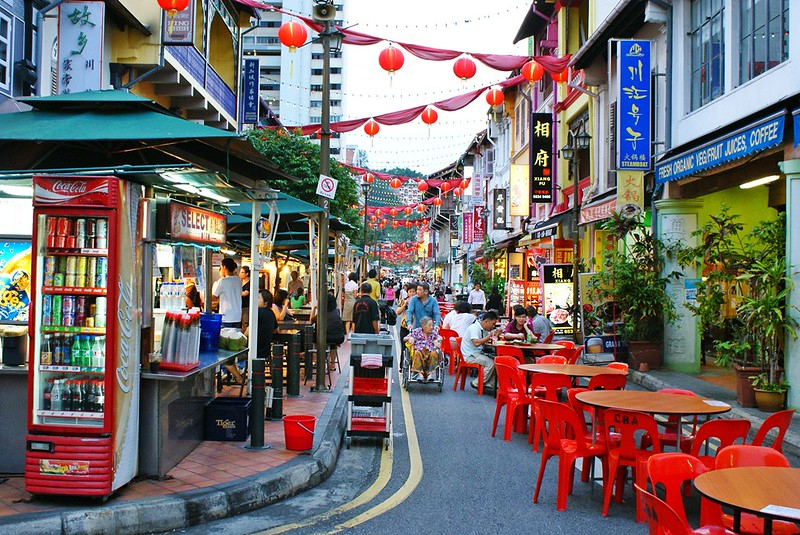
Source: treksplorer.com -
Manila’s Chinatown is called Binondo, and it is one of the best Chinatowns in the world, established in the 1590s. Originally founded by Spanish missionaries as a settlement for Catholic Chinese, it was located across the river from the walled Intramuros part of the city. Today, it is not only a slice of history but probably one of the most authentic and least touristic Chinatowns in the world. The Filipino-Chinese Friendship Arch, doubling as the entrance gate to Binondo, is one of the most colorful and pretty of them all. Try the Chinese-Filipino fusion street food on and around Ongpin Street, and don’t skip sampling dishes such as spring rolls, cake, stir-fried noodle dishes, and the siopao steamed buns. The best place to start a tour is on Carvajal Street, otherwise known as Umbrella Alley, which offers some of the best street food in the city.
Manila’s Chinatown displays a mix of influences; the traditional Chinese apothecary selling dried sea horses and ginseng huddles close to a modern bank outfitted with automatic doors and shotgun-toting guards. Chinese restaurants operate next to Italian furniture shops, while Chinese immigrants hawk cheap wares on the street. In the traditional Chinese style, certain streets are known for selling a particular item. Ongpin Street is the king of gold and jade jewelry; Nueva Street vendors sell mainly office supplies. Head to Pinpin Street for furniture, and tiny Carvajal Street for the busy wet market and lunchtime dim sum with the locals.
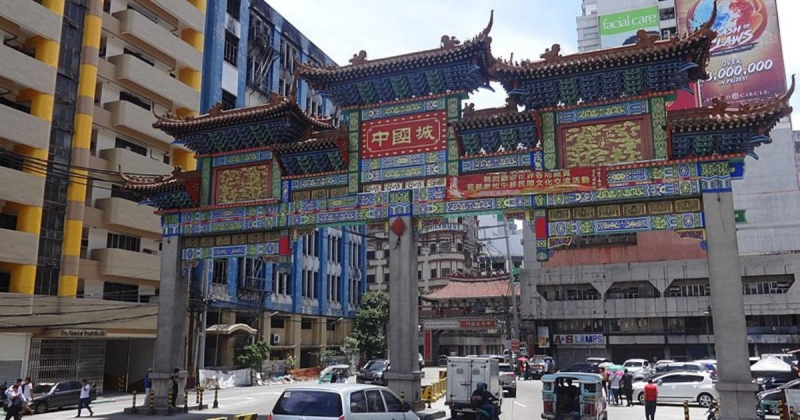
Source: chinadaily.com.cn 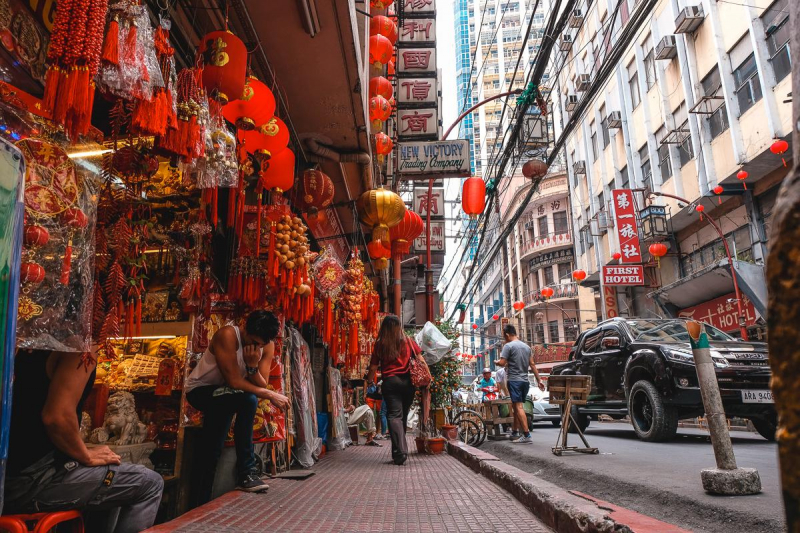
Source: thetravelinsider.co












